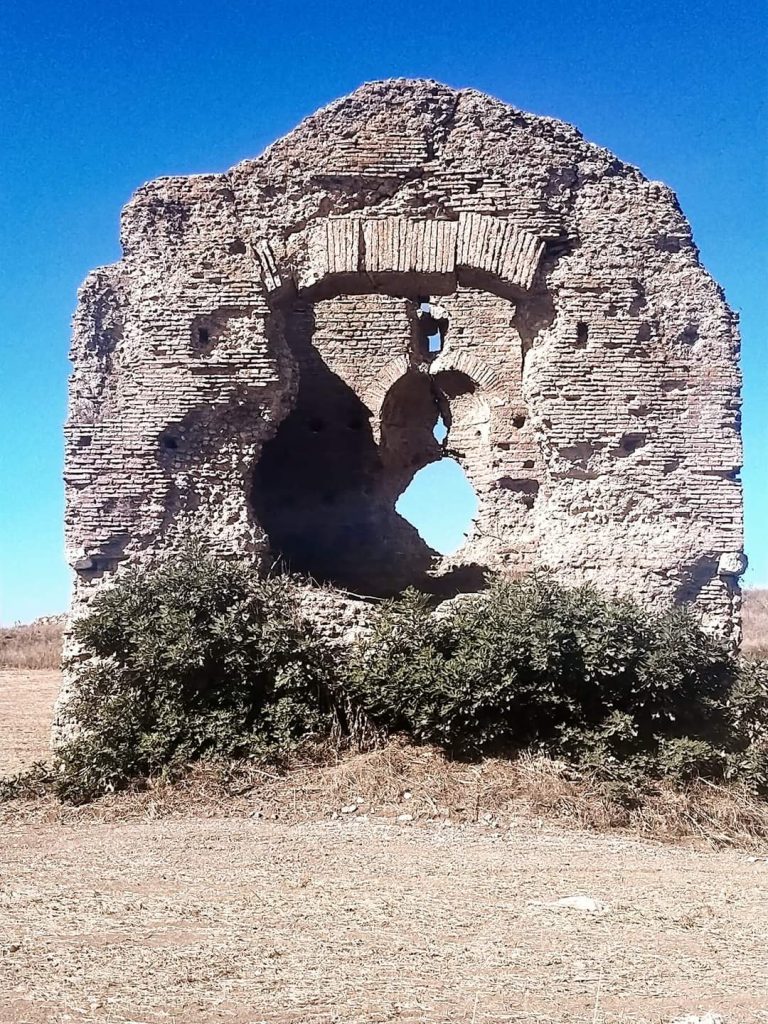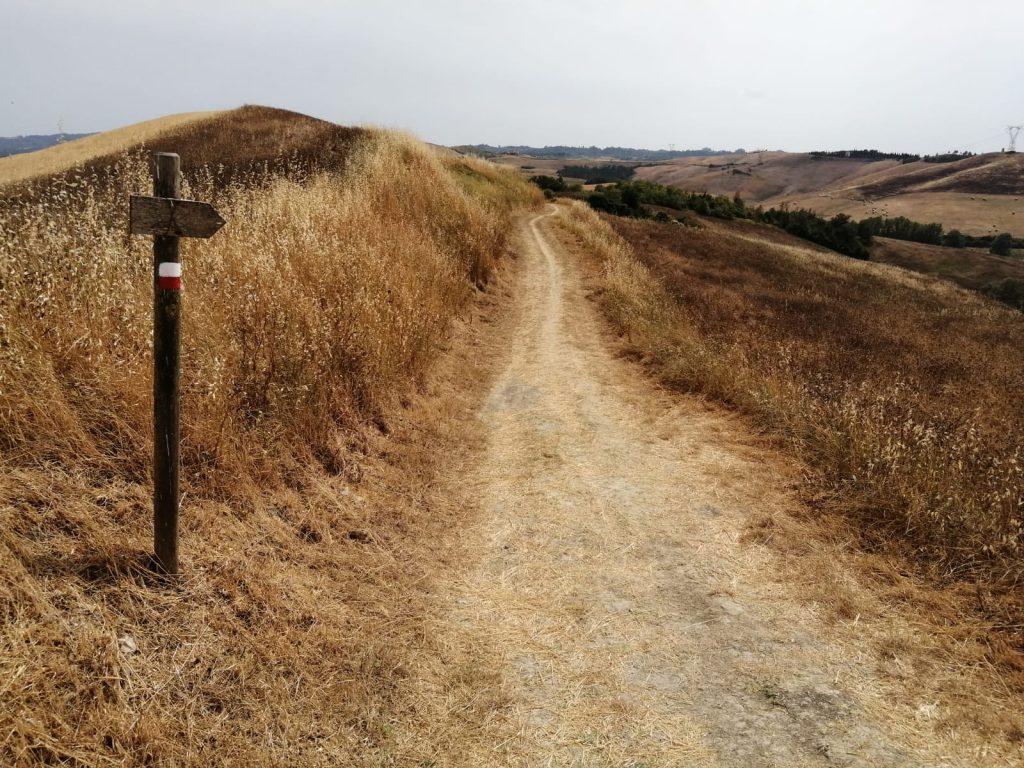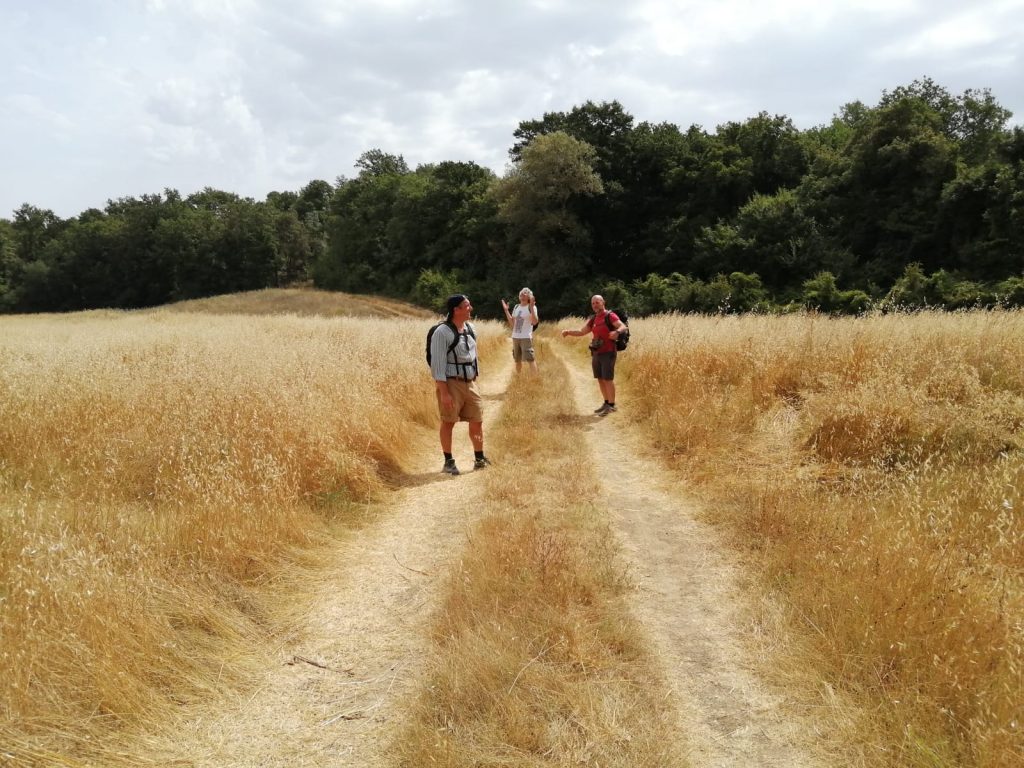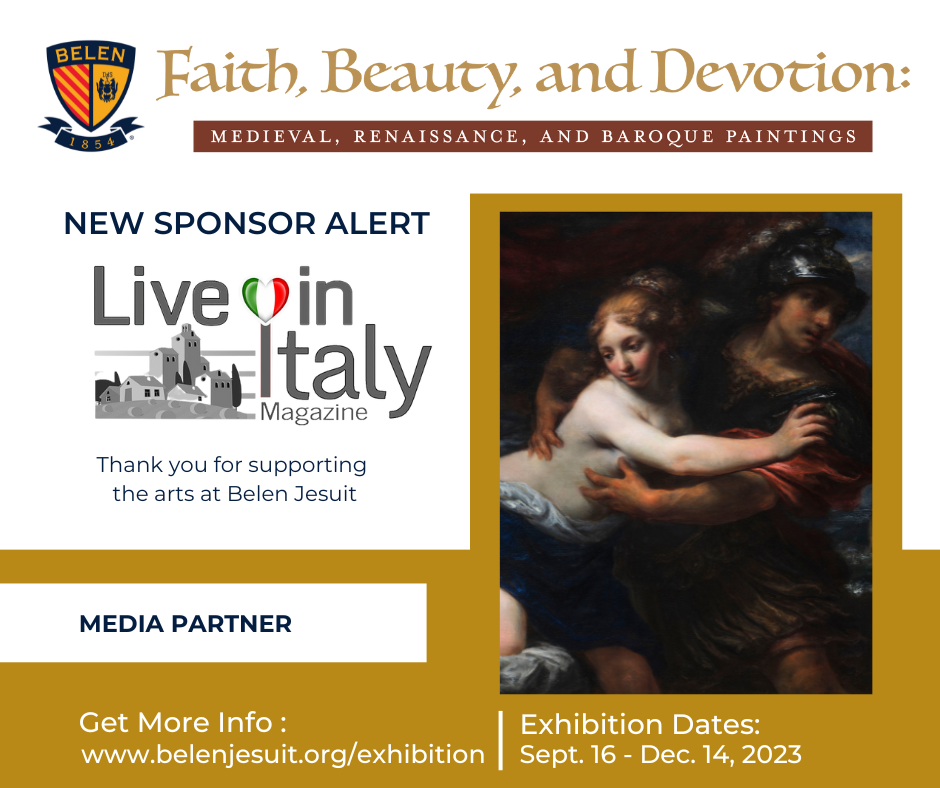Europe boasts of one of the most important routes in the world, centered on religious belief, culture, and beauty. Every year thousands of pilgrims travel on foot, bicycle, or even on horseback to the Via Francigena. This ancient way crosses the whole of France and enters Italy over the Great St. Bernard Pass. Finally, it crosses the peninsula to the doors of St Peter’s in Rome.
The ancient maps clearly show that there is also the so-called Via Francigena of the south. This route leads from Rome to the Tyrrhenian and Adriatic coasts before proceeding on to Jerusalem.
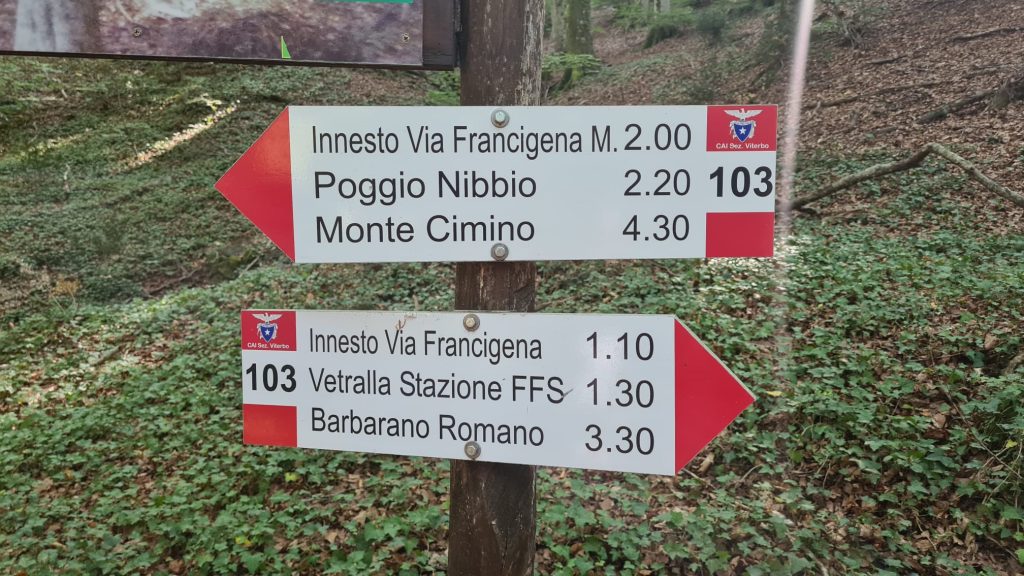
The stretch of the Via Francigena that runs through the Northern Lazio, and therefore the Tuscia area, is considered one of the most remarkable segments of the entire route due to the variety and richness of the landscapes. In fact, this part of the itinerary, which opens with the small town of Proceno and its imposing castle, runs through rolling hills, flower fields, woods and small villages before reaching the Eternal City.
The Via Francigena is gaining more and more pilgrims every year attracted not only by the spiritual significance of this journey, but also by the magic of slow travel. Statistics show that more than half of the travelers are people between 50 and 70 years old, great walkers, educated and passionate about landscapes, culture, and human connections.
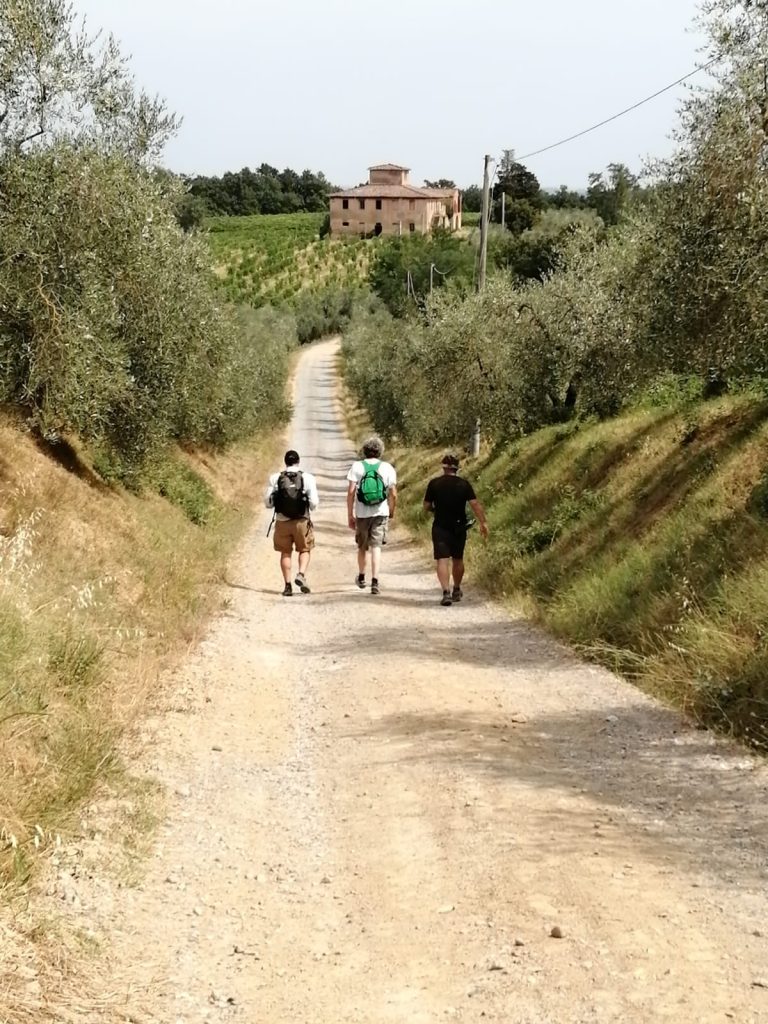
That means that the original spiritual purpose of this pilgrimage leads people to the most important Christian destinations found worldwide. The journey is now accompanied by other new inner purposes, such as the enjoyment of the surrounding landscape, the many ancient villages and the local food/wine specialties of the places visited.
A Brief History of the Via Francigena
The Via Francigena, meaning “the road from France”, is one of the most significant historic routes of Europe traveled since the Middle Ages and connects northern and western Europe to Rome. Over the centuries it was traveled by merchants, armies, and pilgrims.
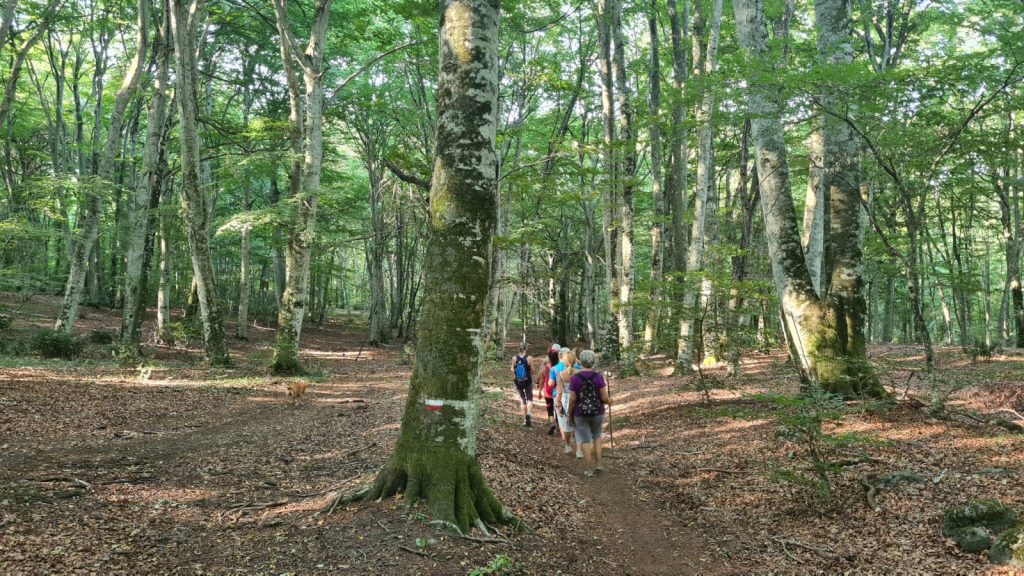
It was above all in the early Middle Ages, when the practice of pilgrimage began to spread, that the Via Francigena assumed the identity of a spiritual journey. Over the years, as a result of the ever-increasing number of pilgrims who take this journey as a form of expiation for their sins, the Via Francigena became the vital link in the great path that unites Santiago de Compostela (where the apostle James is buried); Rome (where Peter’s tomb is located); and Jerusalem (the Holy Land).
Sigeric’s Diary
It is mainly thanks to travelogues, and in particular to the meticulous notes of the illustrious pilgrim Sigeric, that it is now possible to reconstruct the ancient Via Francigena. In 990 AD, following his investiture as Archbishop of Canterbury by Pope John XV, Sigeric made his way home taking note of the 79 mansiones (towns, villages or lodges where he stayed the nights) closely detailed on two hand-written pages. His diary is still considered the best record of this route, to the extent that it is often called the “Via Francigena according to the itinerary of Sigeric” to indicate the most historically pure vision of the route.
In fact, albeit the name of this route might suggest that there exists just one itinerary, in reality, there is a network of many different paths that converge under the denomination of Via Francingena and that lead to Rome.
The Tuscia Itinerary To Rome
Tuscia boasts breathtaking artistic and landscape sceneries and the stretch of the Via Francigena that runs through it encounters many historical towns that we can list in order: Proceno, Acquapendente, Bolsena, Montefiascone, Viterbo, Vetralla, Sutri, Campagnano, La Storta, and Rome. Each town is characterized by its surrounding nature, its architecture, and its customs and traditions.
This route is a bit less than 200 kilometers (124 miles) and pilgrims can decide to travel at their own pace, conscious that the journey is as important as its destination. The itinerary is divided into legs of an average of roughly 20 kilometers (12.4 miles). The volcanic lake of Bolsena, castles, ancient Roman cobbled paths, olive groves, vineyards, hazelnut groves, oak, beech and chestnut woods are part of the natural scenery that accompanies pilgrims on their way to St. Peter’s Basilica in Rome.
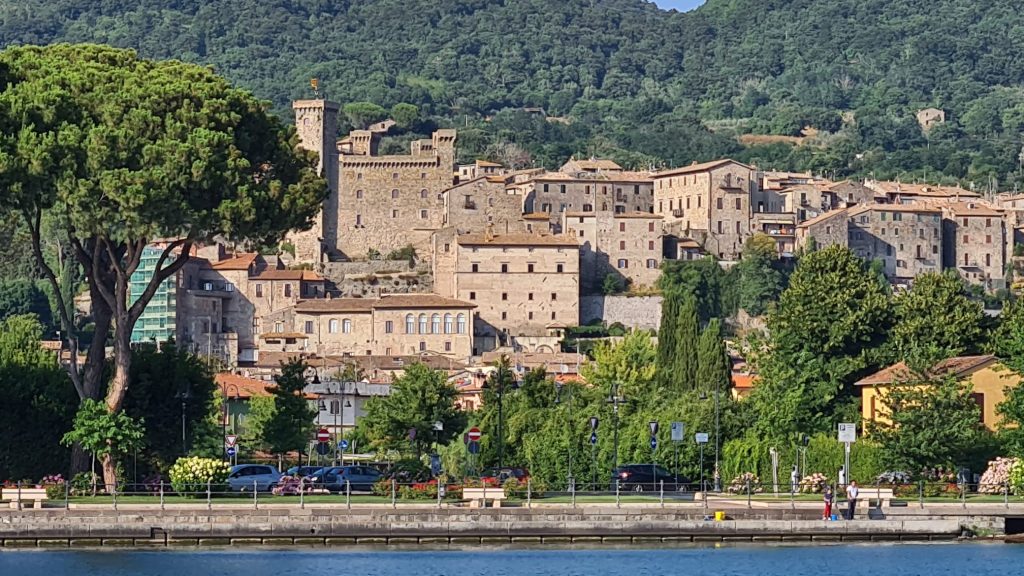
Where to Stay
Convents, monasteries or parishes are the accommodation facilities generally chosen by pilgrims who prefer hospitality at an extremely low price or free (even if donations are welcome) instead of B & Bs or hotels. Dinner is often included, or visitors are sometimes free to make use of the kitchen. In many places, guests are expected to supply their own sleeping bags or sheets. Pilgrims should book at least a day ahead of their arrival, making arrangements with regards to their time of arrival.
Some religious hostels insist that visitors produce their credentials before providing accommodation and this piece of paper is also a precious reminder when the trip is over. The credential is in fact a folder card that is stamped by providers of accommodation along the route, attesting to the holder’s status as a pilgrim and proving the route has been covered on foot or by bicycle. On reaching Rome, pilgrims who have traveled the last section of the Via Francigena (from Acquapendente if on foot, from Lucca if by bicycle) can apply for a Testimonium, a document certifying the completion of the pilgrimage for religious purpose. To obtain one, the pilgrim has to present the credentials and apply to one of those two Pilgrimage Offices: Opera Romana Pellegrinaggi and St Peter’s – Uffici della Canonica.
Who is this Travel Experience For?
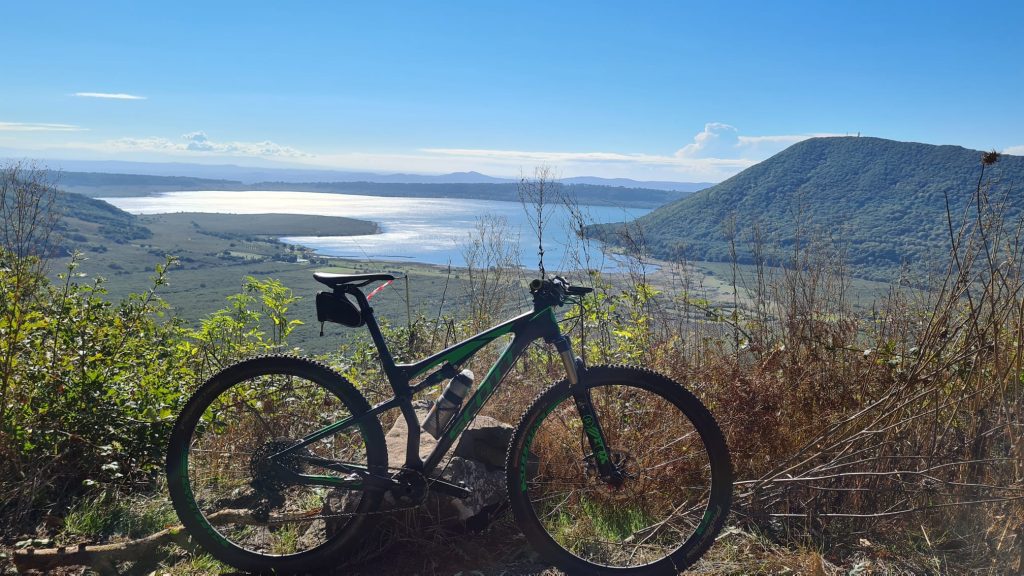
The route of the Via Francigena is full of character, visions and traditions. It is the ideal travel experience that can satisfy those who are in search of themselves through the experience of the spiritual pilgrimage. Or, those who are simply in search of the slow travel: the enjoyment of nature, history, traditions and food/wine specialties encountered along the way.

© Luca Domenico Scipioni 
© Andrea Natali 
© Andrea Natali 
© Andrea Natali

